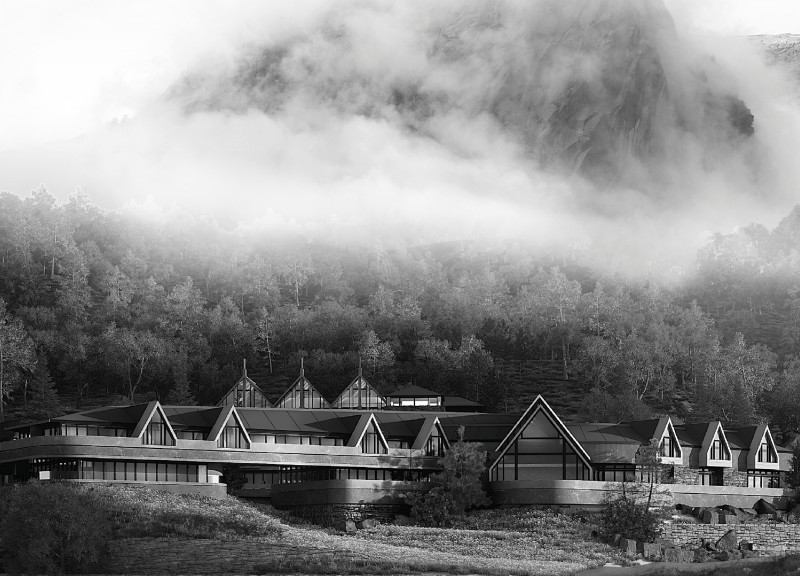5 key facts about this project
At its core, the project functions as a multi-purpose facility, designed to accommodate a variety of community activities. This versatility is reflected in the fluid arrangement of spaces, which promotes interaction and engagement among users. The design carefully considers how people will navigate the building, providing intuitive pathways that guide occupants through public and private areas seamlessly. The entrance is particularly notable, designed to be welcoming and inclusive, encouraging foot traffic while establishing a clear sense of arrival.
The use of materials is one of the most defining aspects of this architectural endeavor. The interplay of concrete, glass, and wood showcases a deliberate choice to blend durability with warmth. Concrete provides a robust structural foundation, while large glass panels create a sense of transparency and openness, inviting natural light to flood the interiors. This thoughtful pairing not only enhances the aesthetic appeal but also contributes to energy efficiency, reducing the need for artificial lighting. Wood accents throughout the project add a touch of softness, grounding the design in natural elements that evoke a sense of comfort.
Unique to this project are several innovative design approaches that set it apart in an evolving architectural landscape. One such approach is the implementation of green roofs which not only contribute to the sustainability goals of the design but also provide recreational space for occupants, further integrating the building with nature. The design also incorporates rainwater harvesting systems that inform a responsible usage of water resources, showcasing a forward-thinking attitude towards environmental stewardship.
The façade of the building is another critical element that illustrates the designer's intent. It features a dynamic composition of materials and textures that respond to the changing light and seasons, resulting in a façade that evolves throughout the day. This layered appearance creates intriguing shadows and reflections that captivate the viewer’s attention while reinforcing the building's contextual connection to its environment.
Thoughtful interior design choices further enhance the project’s functionality and comfort. The use of color palettes and finishes is guided by principles of biophilic design, aiming to foster a connection between occupants and the natural world outside. Open spaces are complemented by strategically placed nooks and areas for quiet reflection, allowing for both social interaction and individual retreat within the building.
The architectural plans reveal a meticulous approach to spatial organization, with an emphasis on accessibility and flow. Each space is designed to serve its function while contributing to an overall sense of cohesiveness. Architectural sections provide insights into the building’s structural integrity and highlight the innovative use of materials, demonstrating how each component supports the project’s overarching vision.
This project exemplifies a modern architectural language that is distinctly expressive yet grounded, advancing ideas about community engagement, sustainability, and functionality. The thoughtful integration of diverse materials, innovative features, and an emphasis on natural light culminate in a building that is not only aesthetically pleasing but also profoundly functional.
For readers interested in exploring this project further, examining the architectural plans, sections, and detailed design elements will provide a comprehensive understanding of the ideas that shaped this significant architectural work. Delving into these aspects will illustrate the comprehensive thought process behind the design, connecting the physical space back to its larger community and environmental context.


 Akbar Ali Khan
Akbar Ali Khan 




















